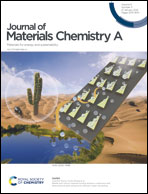Recent progress on the phase modulation of molybdenum disulphide/diselenide and their applications in electrocatalysis
Abstract
Molybdenum disulfide and molybdenum diselenide (MoX2, X = S and Se) are two of the most widely investigated 2D materials for electrocatalytic applications in recent years due to their ultrathin layered structures, unique physico-chemical properties, and controllable electronic structures. However, due to their unsatisfactory activities and stabilities, various strategies, including phase modulation, morphology regulation, compositing modification, have been applied to regulate and optimize the electrocatalytic performances of MoX2. In this regard, phase modulation is considered to be the most effective method to optimize the surface electronic structure of MoX2 by introducing the highly active metallic 1T phase MoX2. In this review, we summarize the various phase-modulation methods and necessary characterization means for 2H and 1T phase MoX2 and introduce their applications in the electrocatalytic field, especially for the hydrogen evolution reaction (HER). Furthermore, the remaining challenges are highlighted and some insights regarding the potential future directions in the design of advanced MoX2 electrocatalysts are also provided.



 Please wait while we load your content...
Please wait while we load your content...